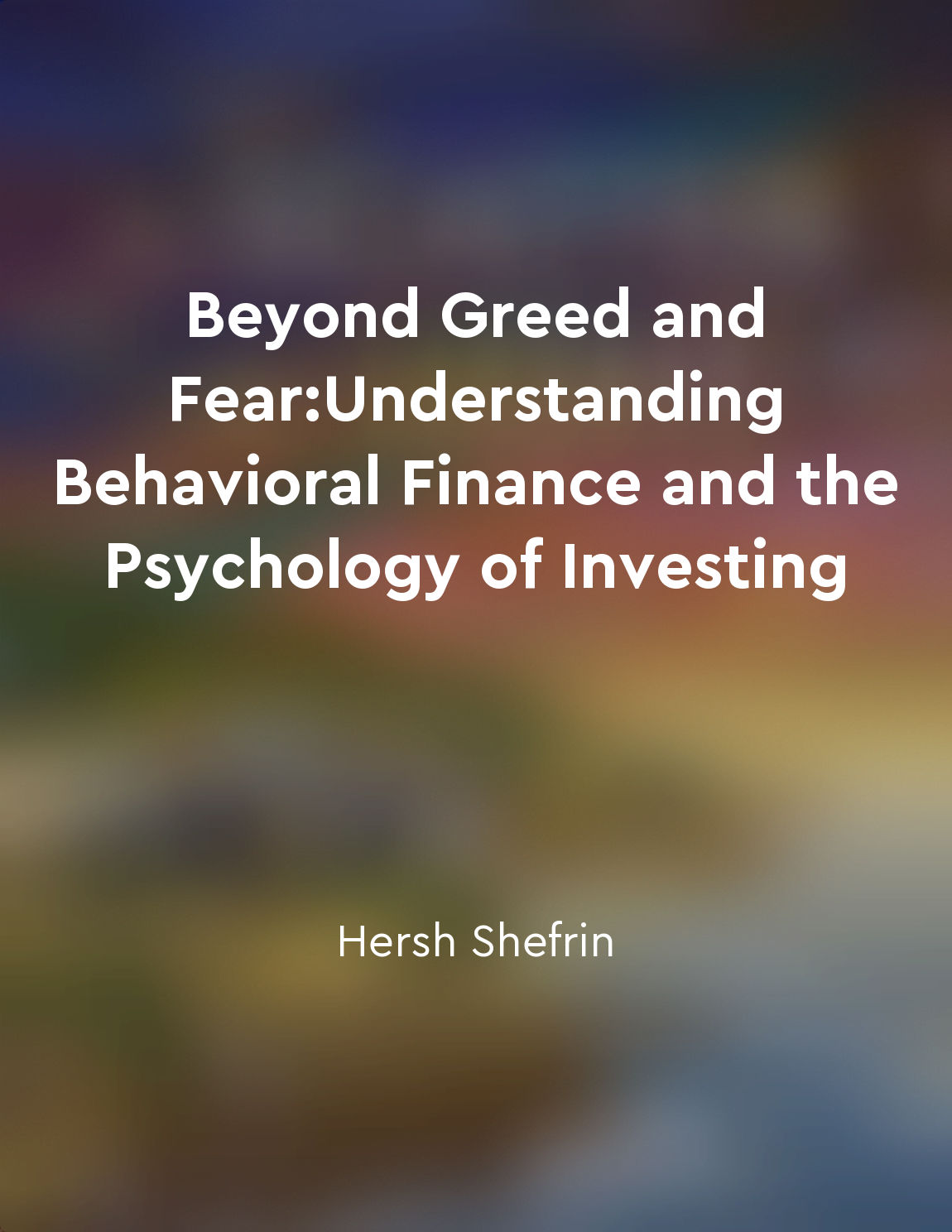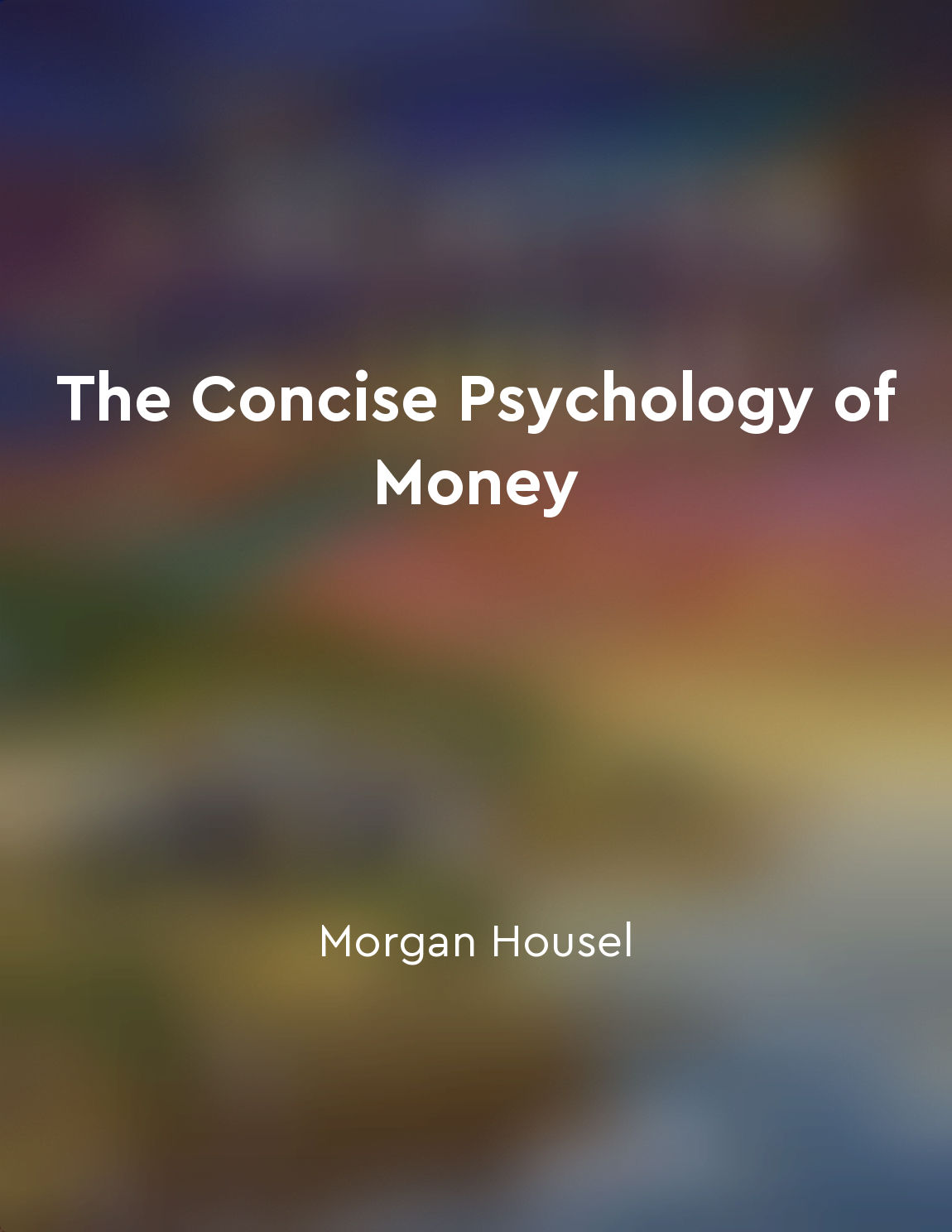Greed and fear drive the cycles of financial euphoria and panic from "summary" of A Short History of Financial Euphoria by John Kenneth Galbraith
In financial markets, the forces of greed and fear play a crucial role in driving the cycles of euphoria and panic. Greed propels investors to take excessive risks in the pursuit of higher returns, often leading to unsustainable asset bubbles. When prices are soaring, greed takes hold as investors become irrationally exuberant and lose sight of the underlying risks. During periods of financial euphoria, investors exhibit a herd mentality, fueling a self-reinforcing cycle of rising prices and increased speculation. The fear of missing out drives individuals to jump on the bandwagon, further inflating asset prices. As euphoria reaches its peak, investors become blinded by the promise of quick riches, ignoring warning signs of an impending correction. However, with the inevitable downturn in the market, fear quickly replaces greed as panic sets in. Investors rush to sell their assets at any price, leading to a sharp decline in prices. The fear of losing money outweighs the desire for potential gains, causing a rapid unwinding of the speculative excesses built up during the euphoric phase. The cycle of financial euphoria and panic is a recurring pattern throughout history, driven by the inherent human emotions of greed and fear. Despite the lessons of past bubbles and crashes, investors continue to fall prey to the same irrational behaviors, perpetuating the cycle of boom and bust.- The interplay between greed and fear creates a volatile environment in financial markets, where rational decision-making often takes a backseat to emotional impulses. As long as these primal instincts continue to drive investor behavior, the cycle of financial euphoria and panic is likely to repeat itself time and time again.
Similar Posts

Seek opportunities for learning and personal growth
This concept is about continuously seeking opportunities to learn and grow personally, regardless of the circumstances. In time...
Loss aversion is a key concept in behavioral finance
Loss aversion, a central concept in behavioral finance, refers to the idea that individuals feel the pain of losses more intens...

Take advantage of taxadvantaged accounts
Tax-advantaged accounts are an essential tool for investors looking to maximize their returns while minimizing their tax liabil...

Loss aversion causes investors to avoid taking necessary risks
Loss aversion, a key concept in behavioral finance, refers to the tendency for individuals to experience a stronger negative em...

Tracking expenses is crucial for managing a budget and controlling spending
To understand the concept of tracking expenses in managing a budget and controlling spending, one must first acknowledge the im...
Build a strong foundation of knowledge in financial markets
To be successful in investing, one must first understand the intricacies of financial markets. This understanding forms the bas...

Excessive optimism leads to speculative bubbles
Excessive optimism can be a dangerous sentiment when it comes to financial markets. It can lead to speculative bubbles that can...

Dependence on historical data can lead to market misconceptions
When we study the patterns in the market, we often look to historical data for guidance. This is a natural inclination, as hist...
Evaluate industry growth prospects
To determine the growth prospects of an industry, investors must conduct a thorough analysis of various factors that can influe...

Social factors impact investment decisions
Investment decisions are not made in a vacuum. They are influenced by a myriad of social factors that can sway an individual's ...

